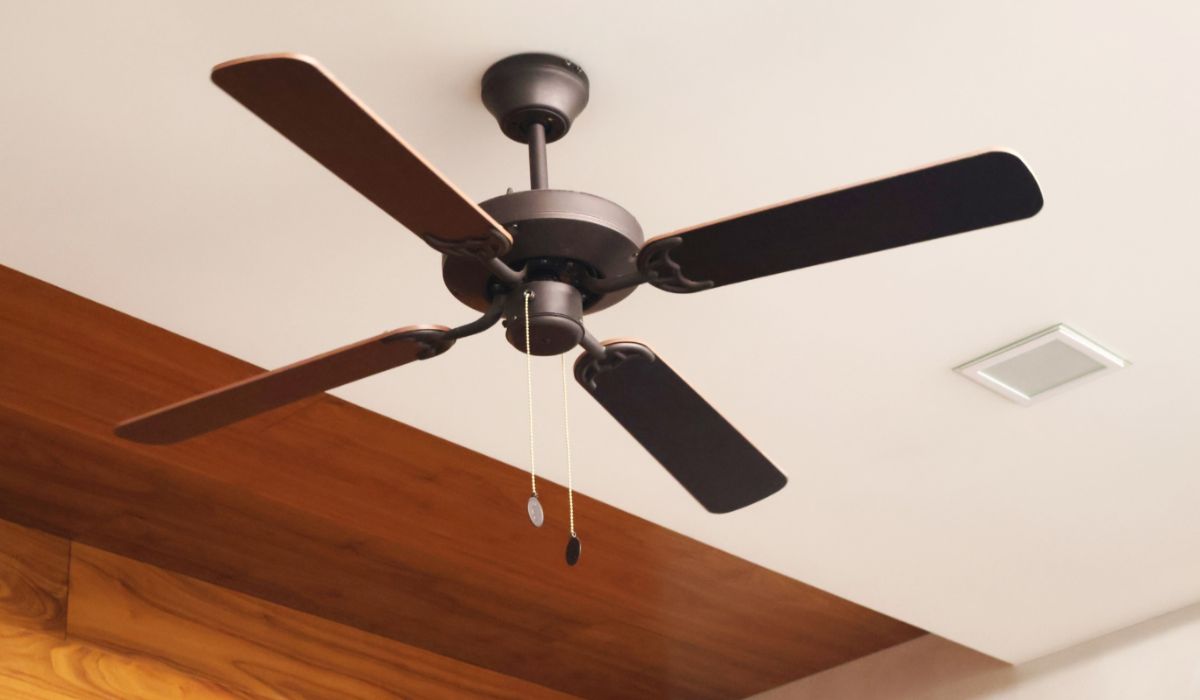A typical household fan uses
between 15 to 100 watts of electricity, depending on its type and speed. Running an average 50-watt fan for 8 hours a day costs around £0.12 per day or £3.60 per month, based on a £0.30/kWh electricity rate.
Fans are an everyday comfort in most UK homes. Flicking on a fan is second nature whether you’re trying to sleep on a warm summer night or circulate air in a stuffy room. But have you ever thought about the electricity a quiet breeze costs you? Understanding how much electricity a fan uses is a practical step towards managing your energy consumption—especially when energy prices are no longer something to overlook.
This detailed guide explores everything you need to know about how much electricity fans use. We’ll examine the consumption of different types of fans, explain how to calculate costs using watts, kilowatts, and amps, and share useful tips to help reduce your energy usage without compromising comfort.
How Electricity Usage is measured
Before diving into numbers, let’s break down the terminology:
- Watt (W): A unit of power. It tells you how much energy a fan consumes per second.
- Kilowatt (kW): 1 kilowatt = 1,000 watts. It’s used to measure electricity consumption over time.
- Kilowatt-hour (kWh): This is what you pay for on your energy bill. It’s the energy a 1 kW appliance uses for 1 hour.
- Amps (A): Short for amperes, this measures the electric current drawn by a device.
Calculating Fan Electricity Use
To determine how much electricity a fan uses, you must know its wattage and how long you use it daily.
Here’s a simple formula to help you calculate:
| Calculation Step | Example |
| Wattage × Hours used | 60W × 8 hours = 480 watt-hours |
| Divide by 1,000 to convert to kWh | 480 ÷ 1,000 = 0.48 kWh |
| Multiply by your energy rate (£/kWh) | 0.48 × £0.30 = £0.144 per day |
So, if you use a 60-watt fan for 8 hours daily, it’ll cost around 14p per day to run, assuming an average electricity rate of £0.30 per kWh. Over a 30-day month, that’s about £4.32.
Electricity Usage by Fan Type
Different types of fans have varying energy demands. Below is a breakdown of average electricity usage for the most common household fan types:
| Type of Fan | Average Wattage | Daily Use (8 hrs.) | Daily Cost (Est.) | Monthly Cost (Est.) |
| Desk Fan | 20–45W | 0.16–0.36 kWh | £0.05–£0.11 | £1.50–£3.30 |
| Pedestal/Tower Fan | 50–100W | 0.4–0.8 kWh | £0.12–£0.24 | £3.60–£7.20 |
| Ceiling Fan | 15–90W | 0.12–0.72 kWh | £0.036–£0.22 | £1.08–£6.60 |
| Box Fan | 60–100W | 0.48–0.8 kWh | £0.14–£0.24 | £4.20–£7.20 |
| Industrial Fan | 150–300W | 1.2–2.4 kWh | £0.36–£0.72 | £10.80–£21.60 |
Please keep in mind that these are rough estimates. Actual usage depends on the make, model, and speed settings.
How to Check the Wattage or Power of Your Fan
Most fans will list their power usage somewhere on the label—typically on the base, plug, or underside. It will say something like “Rated Power: 60W” or “Input: 0.5A at 230V”. You can calculate wattage using this formula if it’s not listed:
- Wattage = Voltage × Amps
In the UK, most appliances use 230 volts. So, if your fan draws 0.4 amps:
- 230V × 0.4A = 92 watts
This figure gives you the real consumption rate, which you can plug into the cost calculation formula from earlier.
Fans vs. Air Conditioning: Energy Comparison
Many people opt for fans as a cheaper alternative to air conditioning, and for good reason.
A portable air conditioning unit can use 900 to 1,500 watts, while central systems often range from 2,000 to 5,000 watts. Compare that to an average desk fan using just 35 watts, and the savings become obvious.
Let’s compare daily costs:
| Appliance | Watts Used (Avg.) | 8 Hour Use (kWh) | Daily Cost (£) |
| Desk Fan | 35W | 0.28 kWh | £0.084 |
| Portable Air Conditioner | 1,200W | 9.6 kWh | £2.88 |
You’d pay £0.08 per day to use a fan, compared to almost £3 per day for air conditioning. That’s a significant saving, especially over the summer.
How Many kWh Does a Fan Use Per Month?
You run a 75-watt pedestal fan for 10 hours every day.
- 75W × 10 = 750 watt-hours
- 750 ÷ 1,000 = 0.75 kWh
- 0.75 × £0.30 = £0.225 per day
- £0.225 × 30 = £6.75 per month
Multiply this by two or three fans, and you can see how the energy usage builds up.
Tips to Reduce Electricity Usage from Fans
Using fans doesn’t mean accepting high energy bills. There are many simple habits and changes you can adopt to cut down on usage:
- Use the Timer Function: Many fans come with built-in timers. Use them at night to avoid the fan running longer than needed.
- Opt for Energy-Efficient Models: Look for fans with DC motors instead of AC motors. They can use up to 70% less power.
- Don’t Run Fans in Empty Rooms: Unlike air conditioning, fans don’t lower room temperature—they only cool people by moving air. So, if no one’s in the room, turn it off.
- Lower the Speed: Fans on higher speed settings consume more power. Use the lowest practical setting to save electricity.
- Clean the Fan Regularly: Dust and dirt reduce efficiency by making the motor work harder.
- Use Fans with Natural Ventilation: Position your fan near an open window to pull in cooler outdoor air, reducing the need for prolonged use.
How Long Can You Run a Fan Before It Becomes Expensive?
Running a fan for long hours won’t break the bank—but the cost still depends on wattage and your energy rate.
Let’s consider a high-power 100-watt fan running for 24 hours:
- 100W × 24 = 2,400 watt-hours = 2.4 kWh
- 2.4 × £0.30 = £0.72 per day
In a month, that’s £21.60—not astronomical, but noticeable.
If you’re using multiple fans or pairing them with other appliances, household electricity use could rise significantly, especially during warmer months.
Should You Worry About a Fan’s Electricity Use?
Fans consume relatively little electricity compared to other appliances like washing machines, electric ovens, or tumble dryers. A standard electric oven can use 2,000 to 3,000 watts, making even the most powerful fan look modest.
Still, that doesn’t mean it’s insignificant. In a household where fans are used in several rooms for long durations, they contribute to the monthly energy bill. Monitoring your usage, especially during the warmer seasons, is a worthwhile habit.
Is It Better to Use a Fan at Night or During the Day?
Fans can be used anytime, but night-time use is the most common due to discomfort during sleep. To keep electricity usage low:
- Use a timer to shut off after a few hours
- Run the fan on a low-speed setting
- Keep windows slightly open to let in fresh air
A 50-watt fan on for 8 hours overnight will use just 0.4 kWh, costing about £0.12. For most people, that’s an acceptable trade-off for a good night’s sleep.
Final Thoughts
So, how much electricity does a fan use? The answer depends on the type of fan, its wattage, and how long you use it—but in general, fans are one of the most energy-efficient cooling methods available. Most household fans operate between 15 and 100 watts, costing just pennies daily. Even if you run one for hours, the impact on your electricity bill remains minimal—especially when compared to air conditioners or heaters.
Understanding the basics—like how to convert watts to kilowatts or how many kWh your fan uses in a day—puts you in control of your energy use. With a few smart habits, you can enjoy the comfort of cool, circulating air without any nasty surprises on your energy bill.
With electricity prices fluctuating and a growing awareness of energy consumption, understanding how much electricity a fan uses isn’t just about saving money—it’s about smart, sustainable living. The good news is that with just a few tweaks, you can stay cool and efficient all year round.
Frequently Asked Questions
How many watts does an average fan use?
Most domestic fans use between 30 and 100 watts, depending on type and speed settings. Ceiling fans usually sit on the lower end, while pedestal and tower fans are slightly higher.
Can I calculate electricity use from amps?
Yes. Use the formula Watts = Volts × Amps. In the UK, voltage is generally 230V, so a fan drawing 0.5 amps would use 115 watts.
Are fans cheaper to run than air conditioning?
Absolutely. A fan may cost less than £0.20 per day, while an air conditioner can cost £2–£3 per day, depending on usage.
What is the most efficient type of fan?
Fans with DC motors and energy-efficient designs (like blade-less fans) tend to use less power and offer quieter operation.
Should I turn my fan off when I leave the room?
Yes. Fans are cool people, not air. Running a fan in an empty room is no benefit—it's just wasted electricity.






